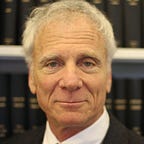Overlooked Miami Beach police shooting exposes legal system’s limp response to needless killing
Editor’s note: Not all police shootings get equal media or prosecutorial attention. This 2015 whitewash of the pointless Miami Beach killing of a young Black man went largely ignored, and murderous police misconduct unpunished.
This story was originally published on May 12, 2015, and distributed nationally by McClatchy.
Raymond Hérisse never made it to his hangover. It was waiting for him, the sour remnant of all the Hennessy he’d been imbibing early the morning of May 30, 2011. But he was still drunk that Memorial Day when he was shot to death at the wheel of his borrowed Hyundai Sonata by 12 police officers in Miami Beach, Fla. He was hit 16 times; later, investigators recovered 124 spent rounds.
Hérisse was 22. It was Urban Beach Weekend, an annual bacchanal that draws to the seaside town a huge outpouring of largely black, largely young, revelers from throughout South Florida. Hérisse was visiting from his home 60-some miles up the coast in Boynton Beach. In the minutes before he died he had been driving his friend’s car foolishly and dangerously along the city’s main thoroughfare Collins Avenue, two blocks from the ocean, careening off several other cars, swerving onto the wrong side of the street and even onto the sidewalk, sending pedestrians and bicycle-riding police scurrying for safety — and drawing gunfire from eight cops as his Sonata rolled along.
Finally the car stopped at 13th Street. It’s not known whether Hérisse had been hit by any of the 44 bullets already fired at the car. The Sonata remained motionless for over a minute; through the tinted windows witnesses thought Hérisse was moving. Maybe he was reaching for a gun. When he didn’t respond to police screaming at him to get out, they started shooting again — eight of them, popping away with their Glocks and Sig Sauers, 81 more rounds for investigators to pick up and count.
By the time it was over a total of 12 officers from three different forces enlisted to handle the weekend crowds had fired on Raymond Hérisse. They hit four bystanders, wounding them severely, and they killed Hérisse.
The affair got a bit of notoriety at the time after police seized and destroyed the smartphone of one of several onlookers who had the presence of mind to record the fusillade. He managed to get his video to CNN only by hiding the memory card in his mouth. So for a moment the incident became a press freedom issue.
As it happens, I was asleep about 10 blocks away at the time of the shooting, and as the facts trickled in was appalled by what seemed to be the grotesque and murderous disproportionality of the police response. What was going on? Why did it take three days for police to announce they’d found a gun in the car, which it turned out was under a seat, wrapped in a shirt, untouched? And in a city that had been convulsed repeatedly in the ’80s and ’90s by racial violence triggered by lethal predation by police, would there be any reckoning?
It took local authorities nearly four years to come up with a determination as to whether anybody, apart from Raymond Hérisse, did anything wrong that pre-dawn morning. Finally on March 16, the Miami-Dade State Attorney’s Office released its findings, which cleared police of any criminal wrongdoing (the civil suits filed by the onlookers who were shot aren’t affected.)
The gist of the prosecutors’ 85-page report is that Hérisse was a fleeing felon, and under Florida law could therefore be shot dead. Investigators added, citing Florida’s much reviled Stand Your Ground law for good measure, that since he posed an imminent threat of bodily harm there was further reason to shoot.
Now I don’t know on what planet it makes sense to prevent a reckless driver from hurting people by shooting at him while he’s zipping along. Nor is it clear who’s being protected when police start blazing away after the car has stopped, possibly for good.
As to his status as a felon, the crime that qualified Hérisse consisted of his shoving away a police officer who early on noticed he was drunk and tried to arrest him, opening his car door and grabbing his arm. He then brushed the cop with his car. From that moment on, the investigators concluded, shooting Hérisse was warranted. Luckily, police didn’t call in an air strike.
Still, despite the recent flurry of deaths of young black men at the hands of police in Ferguson, Mo.; North Charleston, S.C.; Staten Island, N.Y., and Baltimore it’s remarkable that the Miami Beach killing has gone almost unnoticed. As Hérisse’s family attorney, referring to the Missouri shooting, said last year: “What happened to Michael Brown is very unfortunate, but it pales in comparison to what happened to Raymond Hérisse.”
The local legal system, it seems, was wholly incapable of responding to the panicky over-reaction, needless endangerment of onlookers, and staggering absence of command judgment that left Hérisse dead, instead of locked up in a drunk tank to await his hangover and an angry magistrate.
Still, the system does sometimes work. On July 3, 2011, an on-duty Miami Beach police officer took a woman he’d been drinking with at an Ocean Drive bar for a joyride on the beach in his ATV. He ran over two tourists who were lying in the sand, leaving them seriously injured. The cop lost his job and later was sentenced to 18 months for reckless driving. He was Derick Kulian, who four weeks before had fired at least five of the rounds at Raymond Hérisse a few blocks away.
Follow Edward Wasserman on Twitter: www.twitter.com/edwardwasserman.
